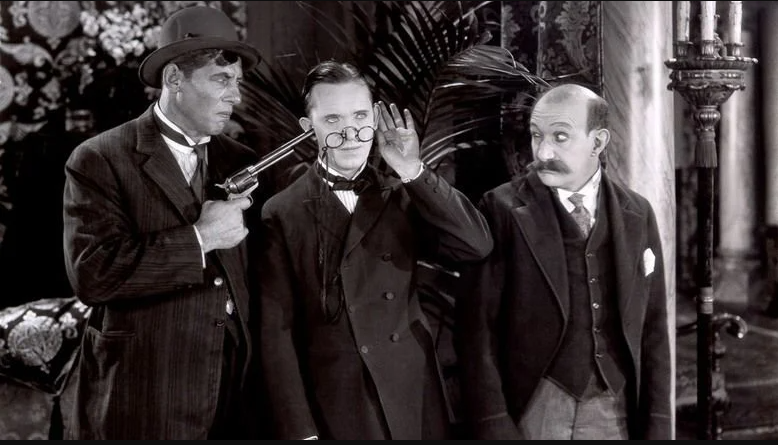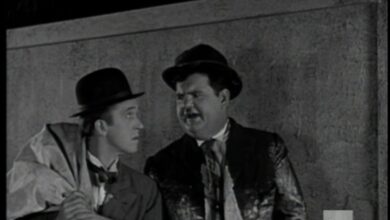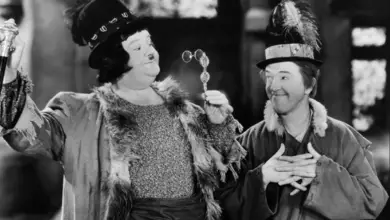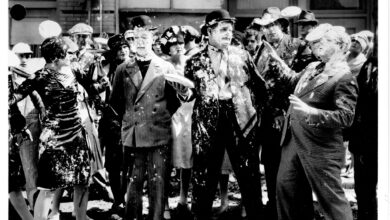Sugar Daddies (1927): Laurel and Hardy and Finlayson go to Venice Beach

You’ll recall the bizarre creature, that tottering hybrid that attempted to pass itself off as a very tall woman at the end of Love Em And Weep? Well, it’s back – and this time it has about half the movie to itself.
James Finlayson, oil baron and incorrigible playboy wakes up to news (delivered by butler Oliver Hardy), that strains even Finlayson’s expressive power to deliver an adequate double take. Last night, in some speakeasy (this is the height or depth of Prohibition), Finlayson got married – and the ceremony may have some kind of legal force. The wife’s gruesome family are waiting downstairs to get paid off.
Even worse than the grim looking wife is the grimmer looking brand new brother in law, played by the same guy that played the psychotic killer in Do Detectives Think, the terrifying Noah Young. Finlayson summons his lawyer to try and sort out the mess. You would have thought that an oil baron could afford a better lawyer than Stan Laurel, but Stan duly arrives and after some hat play with Ollie, he professionally appraises the situation and advises Finlayson to run away.
The scene them shifts to a hotel in Venice (California of course). I’m moderately proud of the fact that I was able to find out that setting was Venice from the name of a roller coaster seen in the distance called “Some Kick” and which terrified Californians between 1923 and 1934. This Venice setting allows the camera to linger on young women in swimwear swanning around the hotel lobby. Learning that his vicious in laws are out to get him, Finlayson agrees to become the lower half of a tall woman and Ollie agrees to escort this thing from the building. The psychopath takes a while to figure out what’s going on and meanwhile we’ve shifted to Venice Amusement Park.
Seems to me that the main purpose of amusement park in the 20s and 30s was to devise ways and means of getting women’s skirts to fly up. Inevitably, such a venue leads to Finlayson’s exposure and an enormous wooden slide which results in a huge pile of bodies within which nobody can tell who’s who any more.
Twenty minutes of visual comedy are crammed into this short film, which offers an ensemble of comedians at the top of their game. Ollie was always great at playing butlers, butlers with more dignity than their employers, while Stanley’s idiocy is only enhanced by the bizarre circumstance of his somehow having qualified to practice law. Sugar Daddies is not a Laurel and Hardy film but a Laurel and Hardy and Finlayson movie in which each of these actors is playing very much to their individual strengths.
The guy behind the camera (thereby given the “cinematography” credit in the opening titles) in this and a number of other early Laurel and Hardy shorts is none other than George Stevens, who would become one of the most fascinating and influential film-makers of the 20th century. He moved into directing his own films in the 1930, and then on to filming some of the best colour footage of World War 2. His films of newly liberated Belsen and Dachau concentration camps would be used in evidence at the Nuremberg Trials. After the war, he directed classics like Shane (1953) and Giant (1956). But Laurel and Hardy was where he started.





